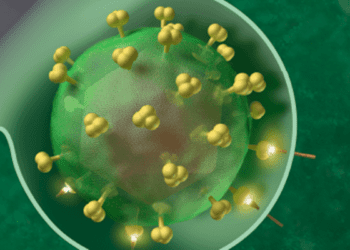[Researcher Comment] Replace peripheral intravenous catheters as clinically-indicated

[tabs tab1=”2MM Rundown” tab2= “2MM Full Report” tab3=”About the Authors”]
[tab]
1. Peripheral intravenous catheters can be safely removed when clinically indicated.
2. Removal following closely monitored clinical indication, as opposed to every 72-96 hours, will avoid innumerable catheter insertions, improve patient comfort, and reduce costs in both equipment and staff workload.
This study shows that the removal of peripheral catheters when clinically indicated (i.e., when signs and symptoms of phlebitis become present) is essentially no different from removal of catheters routinely. A few limitations are nonetheless noted. As mentioned by the authors, lack of blinding, as in any study design, is always an issue (albeit, this would have been difficult to achieve in this study). Likely, patients received superior catheter care as a result of the study (a “Hawthorne effect” of sorts), implying that true rates of phlebitis or catheter-related infections may be higher. Given the use of biocompatible catheters and their insertion by IV insertion teams in 40% of the cases, these factors may have had an effect on lowering complication rates. Also of note, the median dwell time for the clinically indicated group was 84 hours, an amount of dwell time that, in fact, falls within the CDC’s recommended catheter replacement timeframe.
Nevertheless, that there was no clinical difference between routine catheter replacement and replacement as-clinically-indicated has important repercussions. It does avoid unnecessary procedures on patient, a mantra that is always held at the fore. It also salvages IV sites. And, with even a minority of catheters kept in beyond the “96 hour mark”, the health care cost savings in resources would be quite significant – savings that could be funnelled into areas more clinically deserving than routine catheter replacement.
Please click to read study in The Lancet
[/tab]
[tab]
Image: PD
Study author, Prof. Claire M. Rickard, talks to 2 Minute Medicine: Research Centre for Clinical and Community Practice Innovation, Griffith University, UK:
 “There is often a mindset amongst the policy makers that peripheral IVs are easy to place and replace, yet that is often not the case if you talk with the people who are trying to find a new vein every 2-3 days…a job that usually falls on the nurses or the junior doctors.
“There is often a mindset amongst the policy makers that peripheral IVs are easy to place and replace, yet that is often not the case if you talk with the people who are trying to find a new vein every 2-3 days…a job that usually falls on the nurses or the junior doctors.
The challenges of peripheral cannulation are growing, with the typical patient becoming older, more obese and more difficult to cannulate. Our research reassures clinicians of what many already suspected – that peripheral IV catheters can be removed as clinically indicated.
Our recommendations are definitely not to leave IVs in place indefinitely without keeping a close watch on them – the only no risk catheter is no catheter. We know that many IVs are left in place when they are no longer required, and it’s vital that they are reviewed daily by the medical team. In most cases an automatic removal policy for any IV not used for 24 hours would assist in reducing the number left in ‘just in case.”
1. Peripheral intravenous catheters can be safely removed when clinically indicated.
2. Removal following closely monitored clinical indication, as opposed to every 72-96 hours, will avoid innumerable catheter insertions, improve patient comfort, and reduce costs in both equipment and staff workload.
Primer: Obtaining vascular access is a quintessential aspect of patient care while in hospital. Peripheral venous catheters are commonly placed in the hand (metacarpal and dorsal veins), forearm (basilic and cephalic veins), and the antecubital fossa (median cubital and brachial veins). Peripheral venous access, although essential for both phlebotomy and the administration of fluids and medications, is not without its complications: phlebitis, infiltration, arterial or nerve injury, air embolism, thrombosis, hematoma formation, and, more seriously, in situ and bloodstream infections (the latter occurring 0.1% of the time). Phlebitis, characterized by the pain, swelling, erythema, and occlusion demands replacement; to avoid line failure and minimize the risk of potential infections, it has been recommended that short-term peripheral venous catheters be changed every 72–96 hours. Nevertheless, observational studies have shown that the risk of phlebitis following insertion occurs linearly over time, and not exponentially, implying that routine replacement may not be as beneficial as once thought.
For further reading, please see the following studies:
- Webster J, Clarke S, Paterson D, et al. Routine care of peripheral intravenous catheters versus clinically indicated replacement: Randomised controlled trial. BMJ 2008;337:a339.
- Van Donk P, Rickard CM, McGrail MR, et al. Routine replacement versus clinical monitoring of peripheral intravenous catheters in a regional hospital in the home program: A randomized controlled trial. Infect Control Hosp Epidemiol 2009; 30: 915–917.
This [non-blinded, randomised controlled] study: Patients with an intravenous catheter in place and expected treatment of longer than 4 days were randomly assigned to two groups: 1) a clinically indicated group (where removal of catheters would occur only for completion of therapy or complications) and 2) a routine replacement group (with replacement every 72 hours, unless clinical reasons made this impossible). The primary outcome was phlebitis during catheterization or within 48 hours after removal. Of the 3,283 patients studied, phlebitis occurred at a rate of 7% in both groups, with an absolute risk difference of 0.41%. The single patient with a bacteremic infection fell in the “routine replacement” group.
In sum: This study shows that the removal of peripheral catheters when clinically indicated (i.e., when signs and symptoms of phlebitis become present) is essentially no different from removal of catheters routinely. A few limitations are nonetheless noted. As mentioned by the authors, lack of blinding, as in any study design, is always an issue (albeit, this would have been difficult to achieve in this study). Likely, patients received superior catheter care as a result of the study (a “Hawthorne effect” of sorts), implying that true rates of phlebitis or catheter-related infections may be higher. Given the use of biocompatible catheters and their insertion by IV insertion teams in 40% of the cases, these factors may have had an effect on lowering complication rates. Also of note, the median dwell time for the clinically indicated group was 84 hours, an amount of dwell time that, in fact, falls within the CDC’s recommended catheter replacement timeframe.
Nevertheless, that there was no clinical difference between routine catheter replacement and replacement as-clinically-indicated has important repercussions. It does avoid unnecessary procedures on patient, a mantra that is always held at the fore. It also salvages IV sites. And, with even a minority of catheters kept in beyond the “96 hour mark”, the health care cost savings in resources would be quite significant – savings that could be funnelled into areas more clinically deserving than routine catheter replacement.
Please click to read study in The Lancet
Written by [JDP] and [AC]
© 2012 2minutemedicine.com. All rights reserved. No works may be reproduced without written consent from 2minutemedicine.com. Disclaimer: We present factual information directly from peer reviewed medical journals. No post should be construed as medical advice and is not intended as such by the authors or by 2minutemedicine.com. PLEASE SEE A HEALTHCARE PROVIDER IN YOUR AREA IF YOU SEEK MEDICAL ADVICE OF ANY SORT.
[/tab]
[tab]
 Joseph Del Paggio: Originally from Thunder Bay, ON, where he received his degrees in both Honours Biology and Education, Joseph Del Paggio is currently a 4th year of M.D. candidate at the University of Ottawa. Over his medical undergraduate studies, he has gained a deep respect for the ever-expansive and diagnostically-challenging field of Internal Medicine. That said, one of his loves is live music. Although he tries (and fails) to imitate the man on guitar, he’d rather be at a Neil Young concert.
Joseph Del Paggio: Originally from Thunder Bay, ON, where he received his degrees in both Honours Biology and Education, Joseph Del Paggio is currently a 4th year of M.D. candidate at the University of Ottawa. Over his medical undergraduate studies, he has gained a deep respect for the ever-expansive and diagnostically-challenging field of Internal Medicine. That said, one of his loves is live music. Although he tries (and fails) to imitate the man on guitar, he’d rather be at a Neil Young concert.
 Andrew Cheung: Andrew is currently a 4th year M.D. candidate at the University of Ottawa in Canada. He is an avid basketball fan, and is interested in pursuing a career in internal medicine. Andrew is responsible for editing, writing and leading the direction of the ICU, pulmonology and medicine content. His hometown is Mississauga, Ontario, Canada.
Andrew Cheung: Andrew is currently a 4th year M.D. candidate at the University of Ottawa in Canada. He is an avid basketball fan, and is interested in pursuing a career in internal medicine. Andrew is responsible for editing, writing and leading the direction of the ICU, pulmonology and medicine content. His hometown is Mississauga, Ontario, Canada.
[/tab]
[/tabs]






